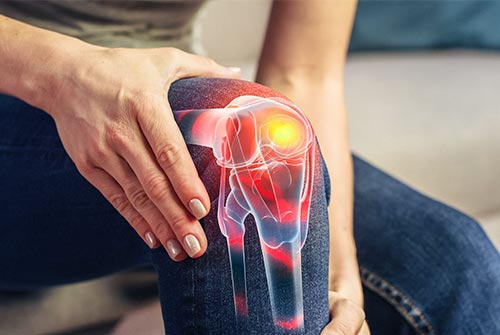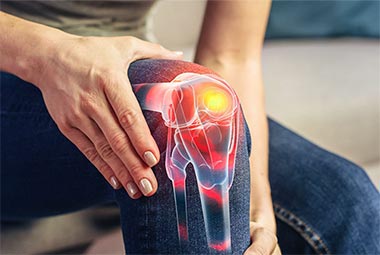
Living with joint pain can feel like an endless struggle, affecting your ability to enjoy life and perform even the simplest tasks. Finding relief is essential to assume control of mobility. Let’s explore the full spectrum of treatment options, from conservative to cutting-edge surgical solutions for those with hip and knee joint pain.
The Roots of Joint Pain
Joint pain can stem from various causes - Osteoarthritis, the most common cause1, is characterized by the gradual breakdown of cartilage in the joints, while rheumatoid arthritis is an autoimmune disorder that causes inflammation.2 Acute injuries such as fractures, dislocations, or ligament tears, as well as inflammation of the bursae known as bursitis, can also lead to joint discomfort. Additionally, gout, a type of arthritis caused by the accumulation of uric acid crystals, can result in intense joint pain.
What to Look Out For
Joint pain can range from a mild ache to severe discomfort, and stiffness is often most noticeable in the morning or after periods of inactivity. Swelling is caused by inflammation in the joint, and redness and warmth can indicate inflammation or infection. Reduced range of motion makes it difficult to move the joint through its full range of motion, impacting daily activities.
Managing Joint Pain with Lifestyle Changes and Medical Treatments
Managing joint pain involves a combination of lifestyle changes, medications, and in some cases, surgical interventions. Lifestyle modifications such as weight loss, regular exercise, and physical therapy can help reduce stress on the joints and improve mobility.
Over-the-counter pain relievers like acetaminophen or NSAIDs, prescription medications, and corticosteroid injections are common medical treatments. Alternative therapies such as acupuncture, massage, and dietary supplements like glucosamine and chondroitin may also provide relief. However, when conservative treatments fail, surgical options like hip and knee replacements may be necessary.
A Definitive Solutions for End-Stage Arthritis
Knee and hip replacement surgery is typically recommended for those with severe osteoarthritis or other debilitating knee conditions. The procedures can be performed using robotic technology for precise implant placement. The benefits of hip and knee replacement surgery include improved mobility and long-lasting results, with modern implants often lasting 20 years or more. Patients who undergo hip and knee replacement often experience a significant reduction in pain, allowing them to perform daily activities with greater ease.
An advanced technique for hip replacement is the Direct Anterior Approach (DAA), a minimally invasive technique that involves accessing the hip joint from the front rather than the side or back. The DAA has several advantages, including reduced muscle damage, faster recovery, and a lower risk of dislocation. By avoiding major muscle groups, there is less damage to tissues, which can result in a quicker return to normal activities and more stable joint positioning.
Living with joint pain doesn’t have to be a life sentence. Understanding the causes and symptoms of joint pain, along with exploring various treatment options, can empower you to take control of your condition. Book an appointment with us for an accurate diagnosis and treatment recommendation for your joint pain.
AUTHOR: Robert J. Avino M.D. is a board-certified and fellowship-trained adult hip and knee reconstruction surgeon at Palm Beach Orthopaedic Institute. Dr. Avino specializes in robotic-assisted hip and knee replacement using the minimally invasive direct anterior approach to hip replacement, across Palm Beach County in South Florida.
Reference:
2. https://www.yalemedicine.org/conditions/rheumatoid-arthritis










